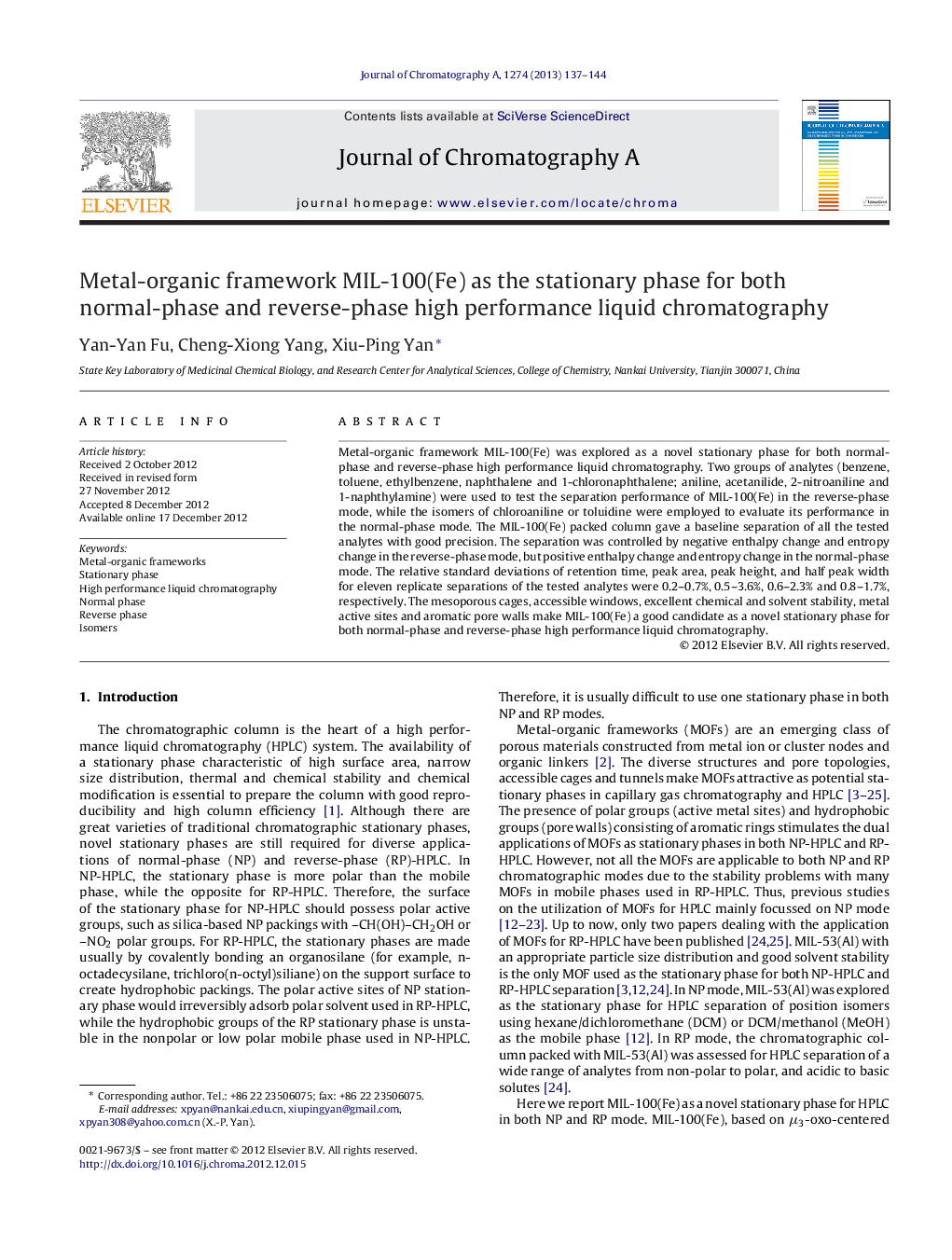| Article ID | Journal | Published Year | Pages | File Type |
|---|---|---|---|---|
| 1201312 | Journal of Chromatography A | 2013 | 8 Pages |
Metal-organic framework MIL-100(Fe) was explored as a novel stationary phase for both normal-phase and reverse-phase high performance liquid chromatography. Two groups of analytes (benzene, toluene, ethylbenzene, naphthalene and 1-chloronaphthalene; aniline, acetanilide, 2-nitroaniline and 1-naphthylamine) were used to test the separation performance of MIL-100(Fe) in the reverse-phase mode, while the isomers of chloroaniline or toluidine were employed to evaluate its performance in the normal-phase mode. The MIL-100(Fe) packed column gave a baseline separation of all the tested analytes with good precision. The separation was controlled by negative enthalpy change and entropy change in the reverse-phase mode, but positive enthalpy change and entropy change in the normal-phase mode. The relative standard deviations of retention time, peak area, peak height, and half peak width for eleven replicate separations of the tested analytes were 0.2–0.7%, 0.5–3.6%, 0.6–2.3% and 0.8–1.7%, respectively. The mesoporous cages, accessible windows, excellent chemical and solvent stability, metal active sites and aromatic pore walls make MIL-100(Fe) a good candidate as a novel stationary phase for both normal-phase and reverse-phase high performance liquid chromatography.
► MIL-100(Fe) is explored as a novel stationary phase for both NP- and RP-HPLC. ► Baseline separation is achieved on MIL-100(Fe) column with good precision. ► The hydrophobicity of MIL-100(Fe) stems from the aromatic ring walls. ► MIL-100(Fe) has potential for NP-HPLC due to the presence of active Fe sites.
